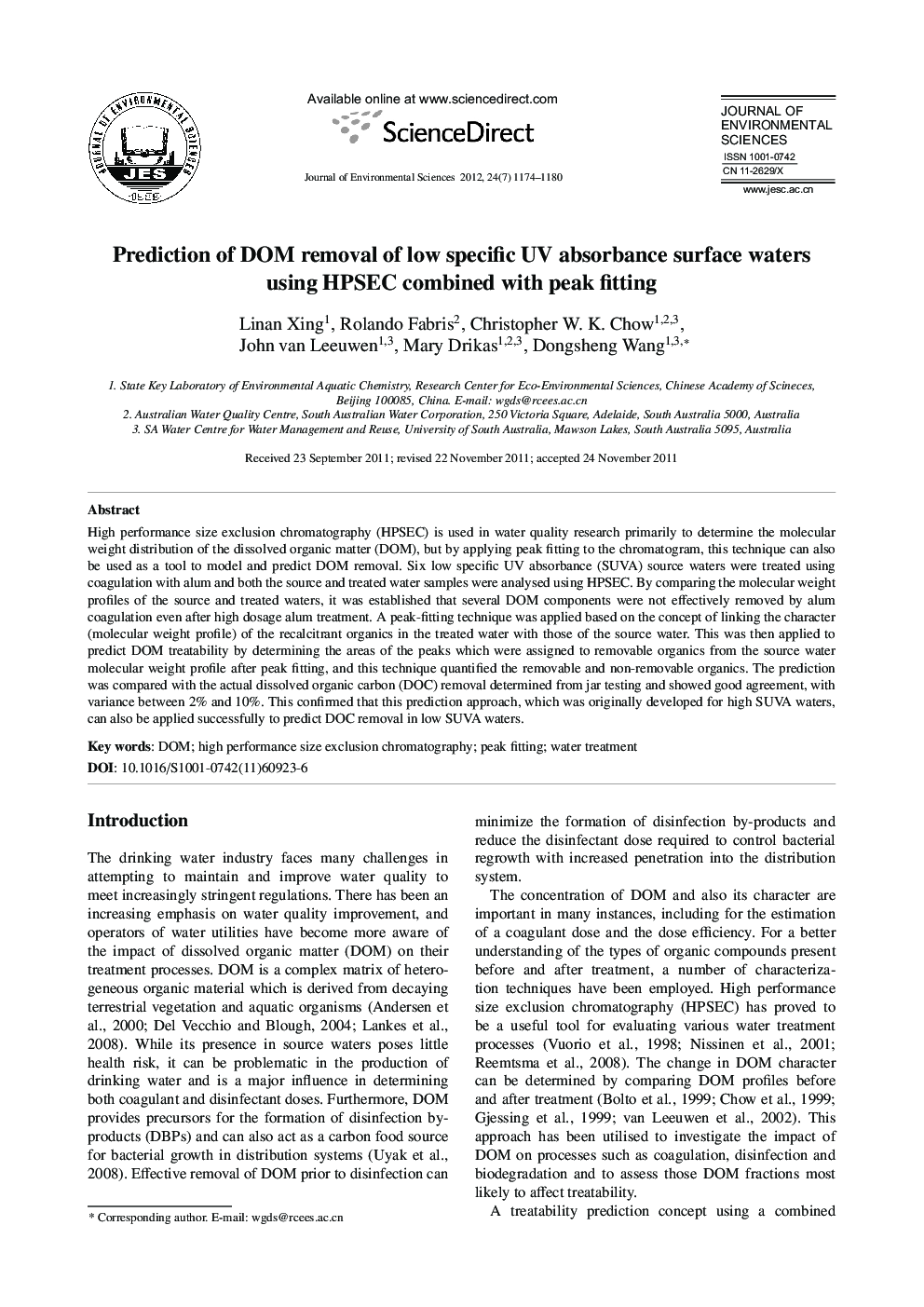| کد مقاله | کد نشریه | سال انتشار | مقاله انگلیسی | نسخه تمام متن |
|---|---|---|---|---|
| 4455308 | 1312513 | 2012 | 7 صفحه PDF | دانلود رایگان |

High performance size exclusion chromatography (HPSEC) is used in water quality research primarily to determine the molecular weight distribution of the dissolved organic matter (DOM), but by applying peak fitting to the chromatogram, this technique can also be used as a tool to model and predict DOM removal. Six low specific UV absorbance (SUVA) source waters were treated using coagulation with alum and both the source and treated water samples were analysed using HPSEC. By comparing the molecular weight profiles of the source and treated waters, it was established that several DOM components were not effectively removed by alum coagulation even after high dosage alum treatment. A peak-fitting technique was applied based on the concept of linking the character (molecular weight profile) of the recalcitrant organics in the treated water with those of the source water. This was then applied to predict DOM treatability by determining the areas of the peaks which were assigned to removable organics from the source water molecular weight profile after peak fitting, and this technique quantified the removable and non-removable organics. The prediction was compared with the actual dissolved organic carbon (DOC) removal determined from jar testing and showed good agreement, with variance between 2% and 10%. This confirmed that this prediction approach, which was originally developed for high SUVA waters, can also be applied successfully to predict DOC removal in low SUVA waters.
Journal: Journal of Environmental Sciences - Volume 24, Issue 7, July 2012, Pages 1174-1180